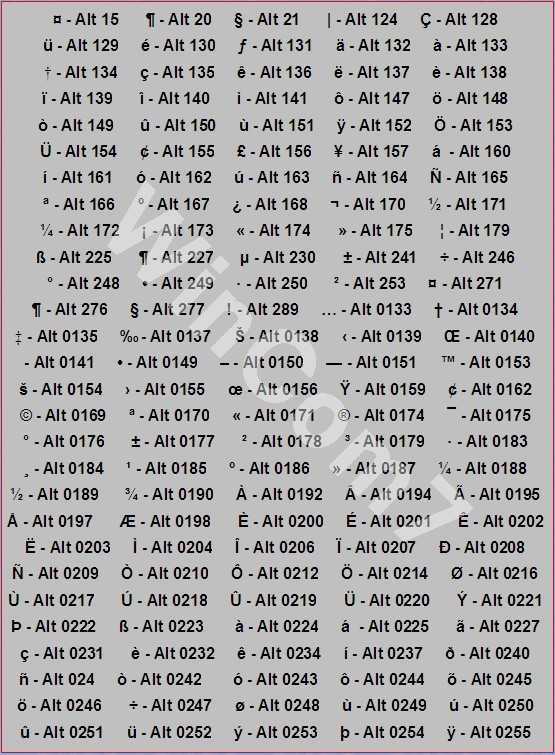Did you ever wonder how to add accents (é), umlauts (ö), circumflexes (ô), and cedillas (ç) in your text? Or how about those Trademark (®) and Copyright (©) symbols? There’s a very simple way to get that job done and the answer is ALT-Codes.
Your normal US standard keyboard has a wide variety of keystroke combinations at the ready to turn a hundred or so keys into 300+. Even with all those possibilities there is no direct way to type some of the more obscure characters that you will sometimes need.
That’s where ALT-Codes come into play. Have a look:
The above list is in no way comprehensive but it does offer some of the more useful characters that you may find yourself needing in your documents.
If the character you need is not listed here, you can look for alt-codes using your favorite search engine to find a gazillion others. Yes, yes, I know– I’ve been told a million times not to exaggerate.
How to insert an ALT-Code
If you are using a high-quality word processor, then it should already have functions available to insert many of these characters. If not, say you are typing in your favorite browser, or even the old standby, NotePad, then you will need an ALT-Code.
To insert the character, hold down the ALT-Key, and type in the number on the Numeric Keypad. Typing the numbers in using the keys at the top of your keyboard will not work.
If the number starts with a 0 (zero), it must be included. For example, 0227 will result with: ã;227 will give you this: p



No comments:
Post a Comment